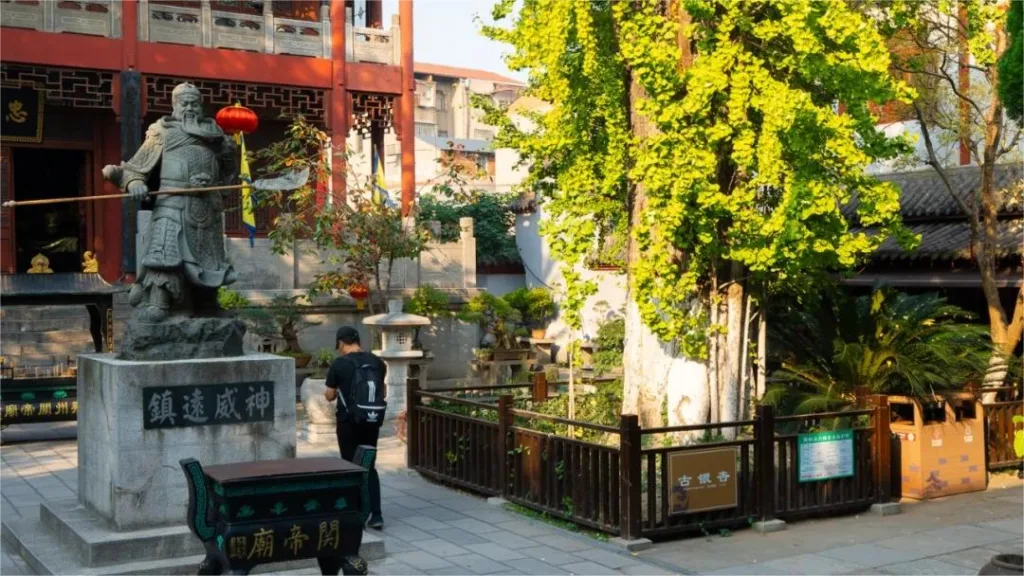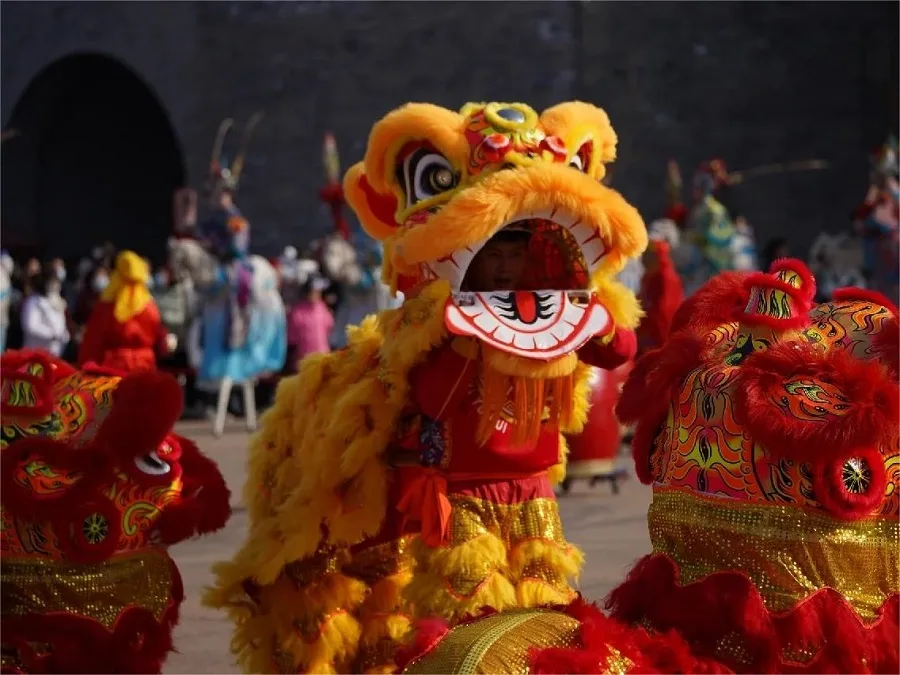Temple Guandi, Jingzhou - Billets, heures d'ouverture, emplacement et points forts


Jingzhou Guandi Temple (荆州关帝庙), also known as Guan Gong Temple, covers an area of 4500 square meters. It was originally built in the 29th year of the Ming Hongwu era (1396 AD) and underwent reconstructions during the Ming Wanli period. It was rebuilt twice during the Qing dynasty in the 7th year of Shunzhi’s reign (1650) and the 10th year of Yongzheng’s reign (1732), with expansions. The site of the temple holds historical significance as both the former residence where Guan Yu guarded Jingzhou for over ten years and the hereditary place of residence for Guan Yu’s descendants in Jiangling. Jingzhou Guandi Temple, along with Guandi Temple in Jiezhou, Shanxi, Guanling Temple in Dangyang, Province de Hubei, and Guanlin Temple inLuoyang, Henan, are collectively known as the Four Great Guan Yu Memorial Sites in China.
Table des matières
- Informations de base
- Localisation et transport
- Highlights of Guandi Temple
- Vlog about Guandi Temple
- Other Attractions within Jingzhou Ancient City
Informations de base
| Durée estimée de la visite | 1 heure |
| Prix du billet | Gratuit |
| Heures d'ouverture | 8.00 - 17.30 ; Dernière admission : 17.00 |
| Numéro de téléphone | 0086-0716-8450389 |
Localisation et transport
The Guandi Temple is located on Aimin Road within the southern gate of the ancient city of Jingzhou. To get there, you can take bus 1, 14, 15, 16, 19, 20, 21, 32, 33, 47, 51, 103, or 968, get off at Zhonggulou Stop (钟鼓楼站), and walk about 600 meters to the west.
Highlights of Guandi Temple
Reliques historiques

Despite alterations, the temple still boasts remnants of its original features, such as the “husband and wife ginkgo trees” planted in the late Yuan and early Ming dynasties. While the male tree is no longer present, the female tree thrives, standing as a testament to the passage of time. The architecture mirrors the traditional style of Guandi Temples, featuring ceremonial gates, main halls, Jiéyì Tower, and exhibition halls. Adorned with gray tiles, red walls, intricate carvings, and majestic rooflines, the temple exudes grandeur and allure.
Art and Sculptures

Stepping into the temple, visitors are greeted by imperial plaques, including one from the Qianlong Emperor reading “Blessings to the Southern Territory” and another from the Tongzhi Emperor proclaiming “Might Resonates Throughout the Nation.” Inside the main hall, a towering statue of Guan Yu stands over ten feet tall, clad in heavy armor, with flowing beard and a commanding presence. Flanking Guan Yu are statues of Guan Ping and Zhou Cang, equally formidable and courageous.
Wall Paintings

Adorning the walls of the main hall are large-scale murals depicting significant events in Guan Yu’s life, such as “Guarding Jingzhou,” “Rescuing the Bride,” “Liberating Cao Cao,” “Meeting with Zhang Fei,” “Aiding Dangyang,” “Flooding the Seven Armies,” “Healing with Scraping,” and “Loyal Souls of Father and Son.” These paintings vividly portray Guan Yu’s virtues of loyalty, righteousness, benevolence, and courage, as well as the reverence of the people of Jingzhou towards him.
Annual Festivities

The temple hosts grand temple fairs every January and on the 13th day of the fifth lunar month. During these events, the people of Jingzhou engage in various festive activities such as dragon lantern dances, lotus boat races, horseback archery, and blowing trumpets while carrying palanquins, enlivening the temple and its surroundings. Worship and admiration for Guan Yu have become enduring traditions in Jingzhou, with the temple remaining a focal point for celebrations and reverence.
Vlog about Guandi Temple
Other Attractions within Jingzhou Ancient City


Former Residence of Zhang Juzheng

Guan Yu Temple, Jingzhou

Sanguo Park, Jingzhou

Taihui Taoist Temple

Jingzhou Museum

Xuanmiao Taoist Temple, Jingzhou
Sites historiques du Hubei, Attractions de Jingzhou